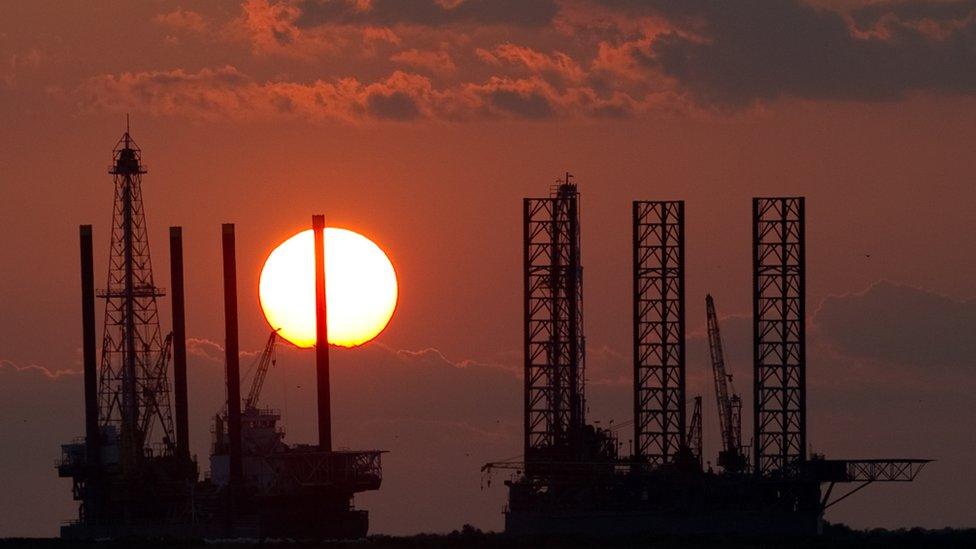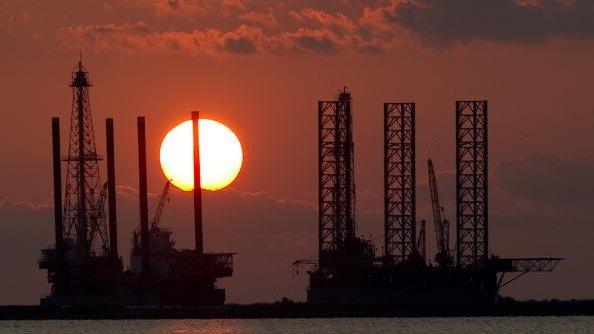Oil hits $50 a barrel for first time this year
- Published

The price of oil has gone above $50 a barrel for the first time in 2016 as supply disruptions and increased global demand continue to fuel a recovery.
Benchmark Brent crude hit $50.22 per barrel at one stage on Thursday, its highest level since early November.
The rise followed US data showing that oil inventories had fallen after supply disruptions due to fires in Canada.
Brent crude has now risen 80% since it hit 13-year lows of below $28 a barrel at the start of the year.
US crude oil inventories fell by 4.2 million barrels to 537.1 million barrels in the week to May 20, according to US Department of Energy data., external
Canada is the biggest supplier to the US and wildfires in the western provinces have reduced supplies by about a million barrels per day.
Talks in recent months between Opec and Russia about freezing oil production had already encouraged a price rise.
Short-term disruptions to oil supplies have also lifted the price, offsetting higher production from Iran and Saudi Arabia.
As well as the disruption to key oil production facilities in Canada, attacks by militant groups continue to restrict oil pipelines in Nigeria.
Demand has also been better than expected from major economies such as China, India and Russia.
Michael Hewson, chief market analyst at CMC Markets, said:, external "We do now appear to be seeing the effects that the decline in US output is having, and while supplies remain elevated, the glut does now appear to be diminishing."
'Surprises'
Against this backdrop, analysts are starting to raise their forecasts.
Goldman Sachs said earlier this month that it now expected oil prices to consistently hit $50 a barrel in the second half of 2016 and $60 by the end of 2017.
The US bank said: "The oil market continues to deliver its share of surprises, with low prices driving disruptions in Nigeria, higher output in Iran and better demand.
"With each of these shifts significant in magnitude, the oil market has gone from nearing storage saturation to being in deficit much earlier than we expected."
Oiling the gears
In a sign of growing confidence, oil companies have started preparing for higher prices.
BP said last month it had budgeted for prices of at least between $50 and $55 a barrel in 2017.
And last month US oil producer Pioneer Natural Resources announced plans to add up to 10 new rigs when the oil price gets back up to $50.
Adam Laird, an investment manager at Hargreaves Lansdown, told the BBC: "This is an area that's been starved of resources and investment and that psychological barrier [of $50] could be enough to make some executives reassess."
However, Mr Laird cautioned that price volatility was likely to continue. "It's too early to say this is the beginning of the big rebound," he said.
Abhishek Deshpande, an oil markets analyst at Natixis, agreed and said: "We believe that the market is going up, but if it goes too quickly there will be auto-corrections."
- Published11 May 2016
- Published11 March 2016
